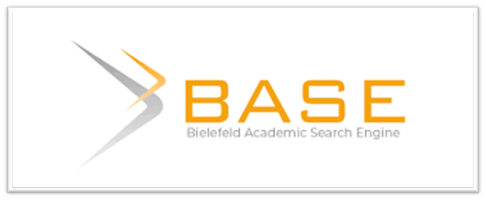DESIGNING ICT COMPETENCES-INTEGRATED WRITING MODELS OF TEACHING FOR ENGLISH LANGUAGE STUDY PROGRAM
Keywords:
ICT Competences, Teaching and Learning Activity, Writing Course, Lesson PlanAbstract
Regarding the requirement of incorporating ICT competences into the teaching and learning process, the aim of this research is to design Models of Teaching for Writing Courses that have infused ICT competences into its teaching and learning activities. R&D was used and adapted from Richey and Klein's concept, with four stages of research including Need Analysis, Design Preliminary Product, Evaluation, and Revision. Literature study and observation were required during the design of ICT competences-integrated teaching models. The findings revealed that integrating ICT competences into existing teaching models was as knowledge deepening as the dominant ICT competences level in which students performed the ability to manage information and used open-ended software tools to access information, deliver the material, and collaborate with peers. Meanwhile, Kilbane and Milman's integrative teaching models were modified, and ICT was incorporated into the design of the Teaching Model for the Writing Course, which was reflected as a prototype lesson plan outlined in paragraphs.
References
Athanasiou, A., Constantinou, E. K., Neophytou, M., Nicolaou, A., Papadima Sophocleous, S., and Yerou, C. (2016). Aligning ESP courses with the Common European Framework of Reference for Languages. Language Learning in Higher Education, 6(2). https://doi.org/10.1515/cercles-2016-0015
Behar-Horenstein, L. S., and Seabert, D. M. (2012). Teachers’ Use of Models of Teaching. Educational Practice and Theory, 27(1), 49–66. https://doi.org/10.7459/ept/27.1.04
Cruickshank Donald R, Jenkins Bainer Deborah, M. K. K. (2006). The Act of Teaching (Fourth; E. Barosse, ed.). New York: McGraw Hill.
Eggen, P., and Kauchak, D. (2012). Strategies and Models for Teachers. Pearson, 72(508), 343.
Ghavifekr, S., Razak, A., Ghani, M., Ran, N., Meixi, Y., and Tengyue, Z. (2014). ICT Integration in Education: Incorporation for Teaching & Learning Improvement. Malaysian Online Journal of Educational Technology, 2(2), 24–45.
Harmer, J. (2004). How To Teach Writing (Sixth). Malaysia: Pearson Education Limited.
Kilbane Clare R, M. N. B. (2014). Teaching Models: Designing Instruction for 21st Century Learners (Fisrt). Pearson. Retrieved from https://www.vitalsource.com/referral?term=9780133357349
Lowie, W. M., Haines, K. B. J., and Jansma, P. N. (2010). Embedding the CEFR in the academic domain: Assessment of language tasks. Procedia - Social and Behavioral Sciences, 3(1), 152–161. https://doi.org/10.1016/j.sbspro.2010.07.027
Lubis, A. H. (2018). Ict dan Perubahan Sosisal. Cakrawala Pendidikan, 37(1), 11–21.
Noor-Ul-Amin, S. (2013). An Effective use of ICT for Education and Learning by Drawing on Worldwide Knowledge , Research , and Experience : ICT as a Change Agent for Education. Department Of Education University of Kashmir, 1(1), 1–13.
Nunan, D. (2003). Practical English Language Teaching. Singapore: McGraw Hill.
Ozdamli, F. (2017). Attitudes and opinions of special education candidate teachers regarding digital technology. World Journal on Educational Technology: Current Issues, 9(4), 191–200. https://doi.org/10.18844/wjet.v9i4.2581
Padmadewi, N. N., and Artini, L. P. (2019). Using Scaffolding Strategies in Teaching Writing For Improving Student Literacy in Primary School. 178(ICoIE 2018), 156–160. https://doi.org/10.2991/icoie-18.2019.36
Rababah, L. M. (2019). Teachers’ Integration of Information and Communication Technology (ICT) Tools into Writing Classes: A Qualitative Study. Journal of Education in Black Sea Region, 5(1), 77–82. https://doi.org/10.31578/jebs.v5i1.190
Richey, R. C., and Klein, J. D. (2005). Developmental research methods: Creating knowledge from instructional design and development practice. Journal of Computing in Higher Education, 16(2), 23–38. https://doi.org/10.1007/BF02961473
Richey Rita C, K. J. D. (2007). Design and Development Research (L. Akers, ed.). New York: Routledge.
Sudewi, P. W. (2020). Learning Experiences Using Blended Learning on Efl Learners At Sulawesi Barat University. Jurnal Basis, 7(1), 121. https://doi.org/10.33884/basisupb.v7i1.1787
UNESCO. (2018). UNESCO ICT Competency Framework for Teachers Version 3. In United Nations Educational, Scientific and Cultural Organization. Retrieved from https://unesdoc.unesco.org/ark:/48223/pf0000265721













 JURNAL BASIS (BAHASA DAN SASTRA INGGRIS)
JURNAL BASIS (BAHASA DAN SASTRA INGGRIS)
